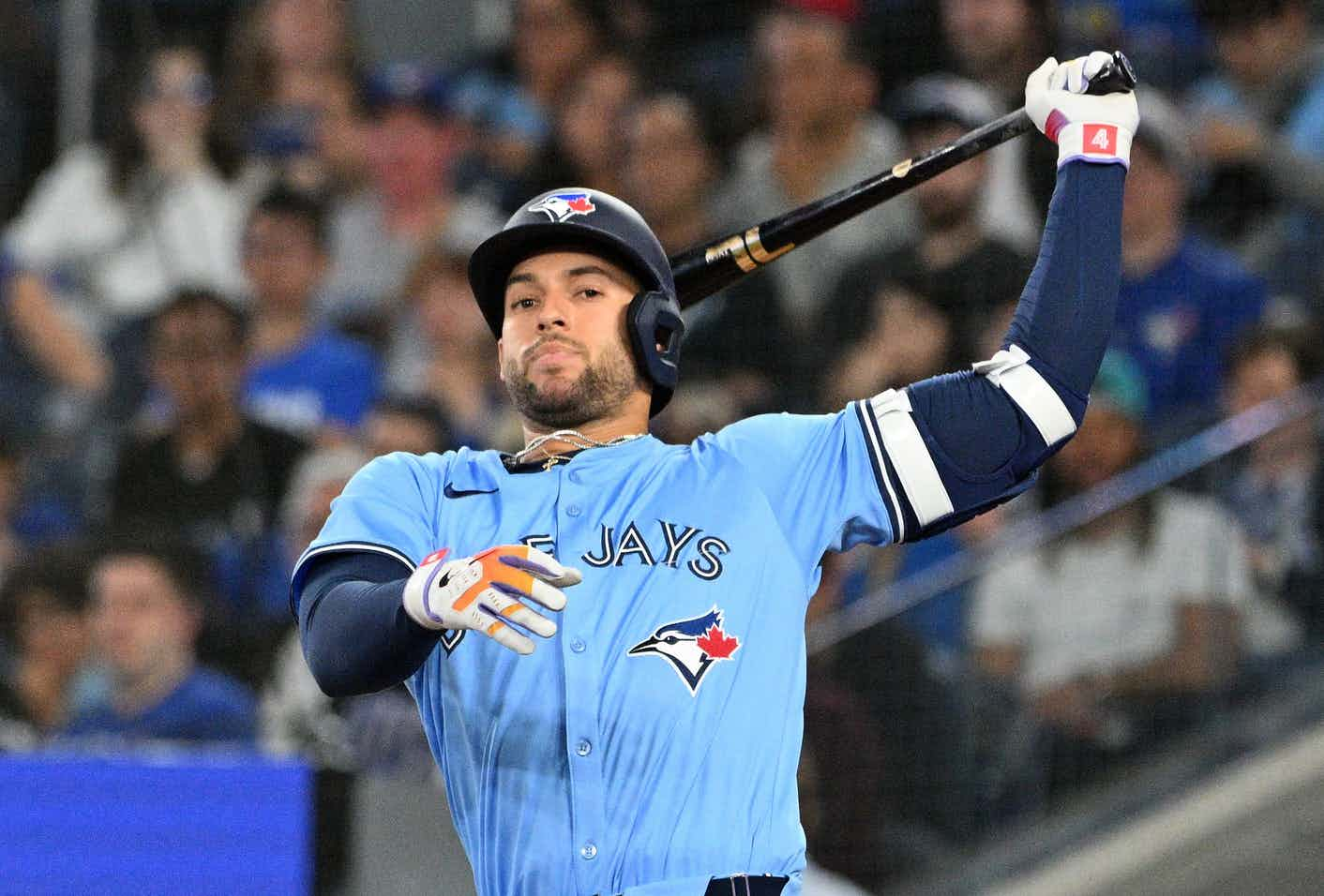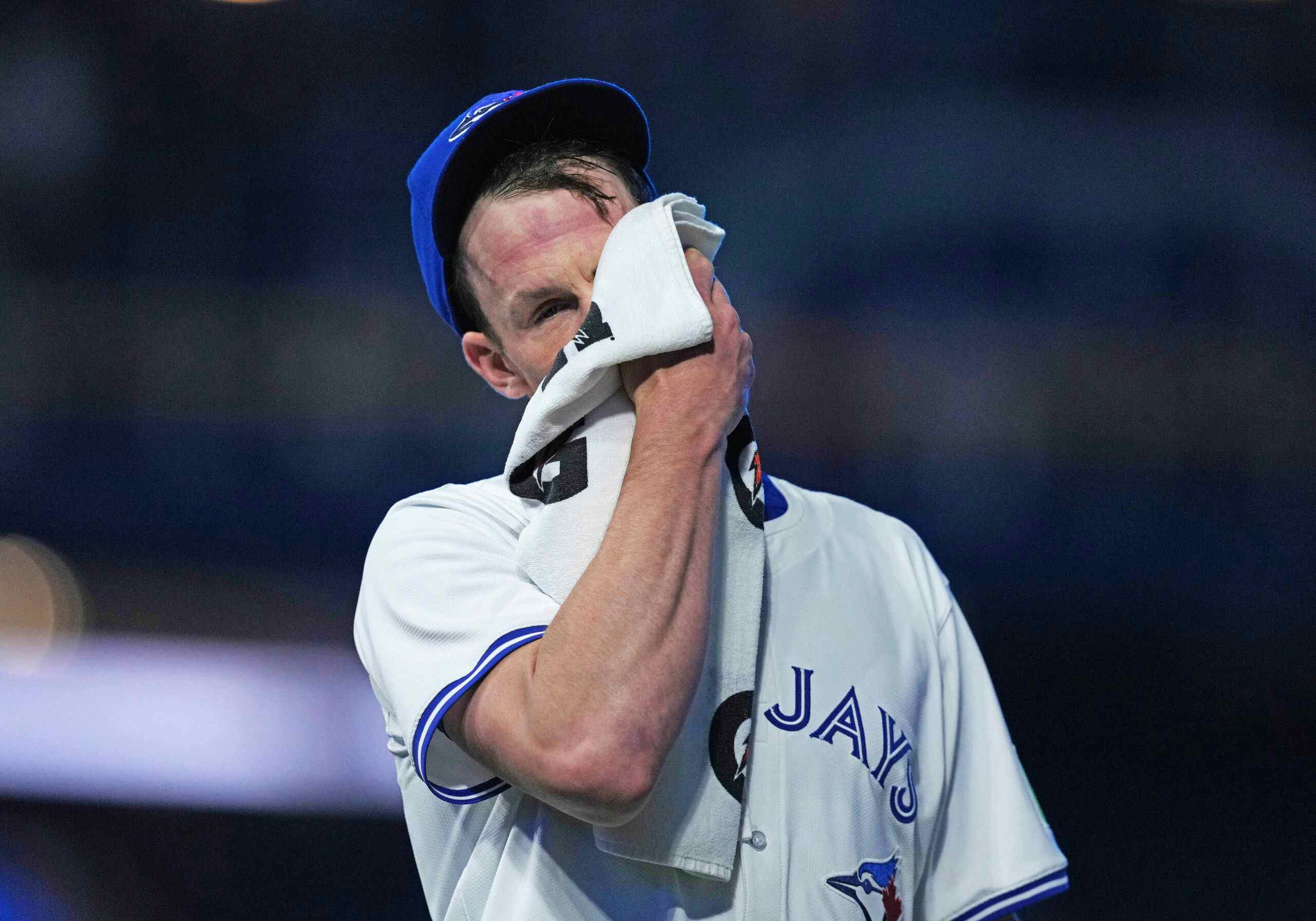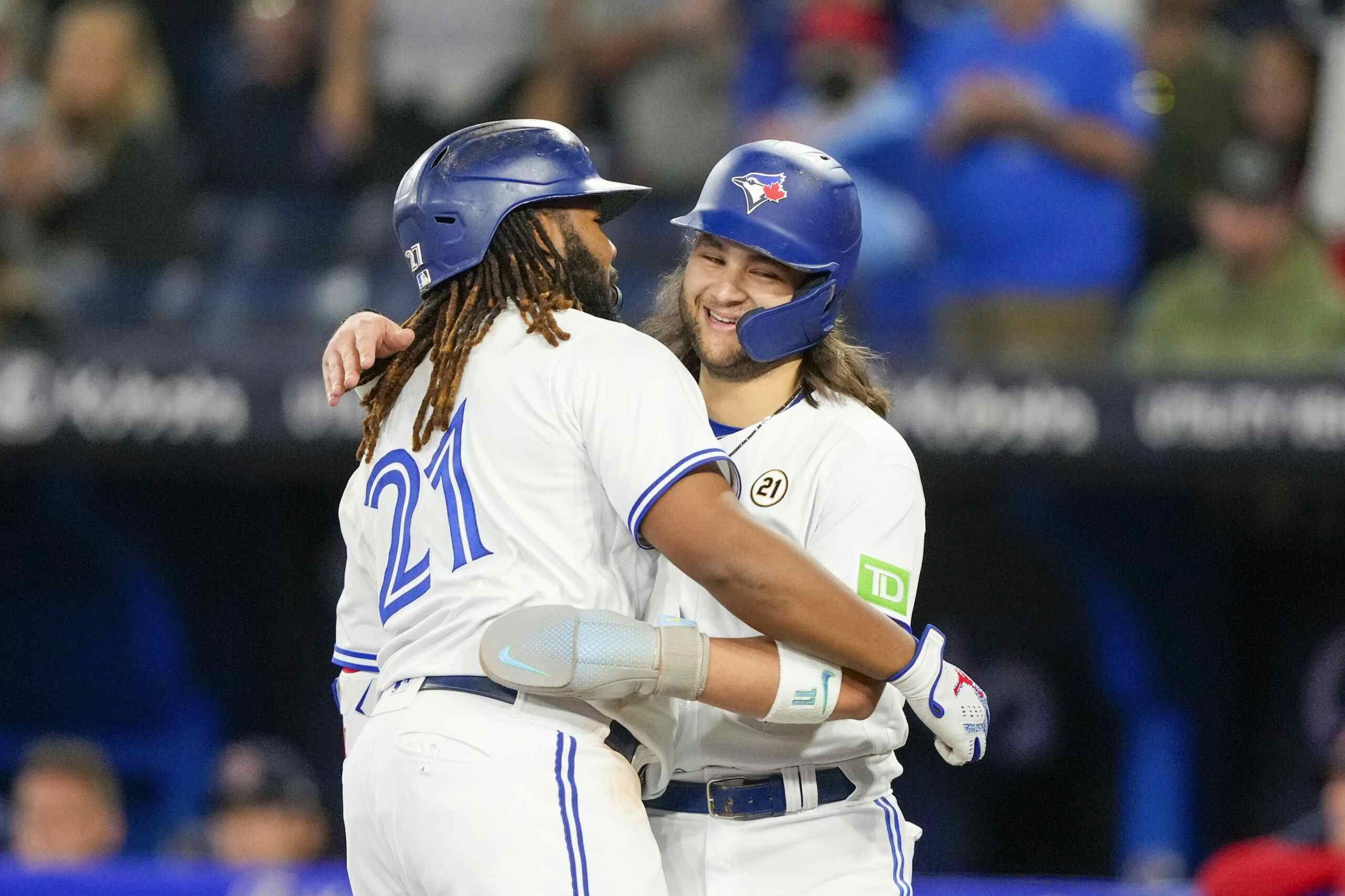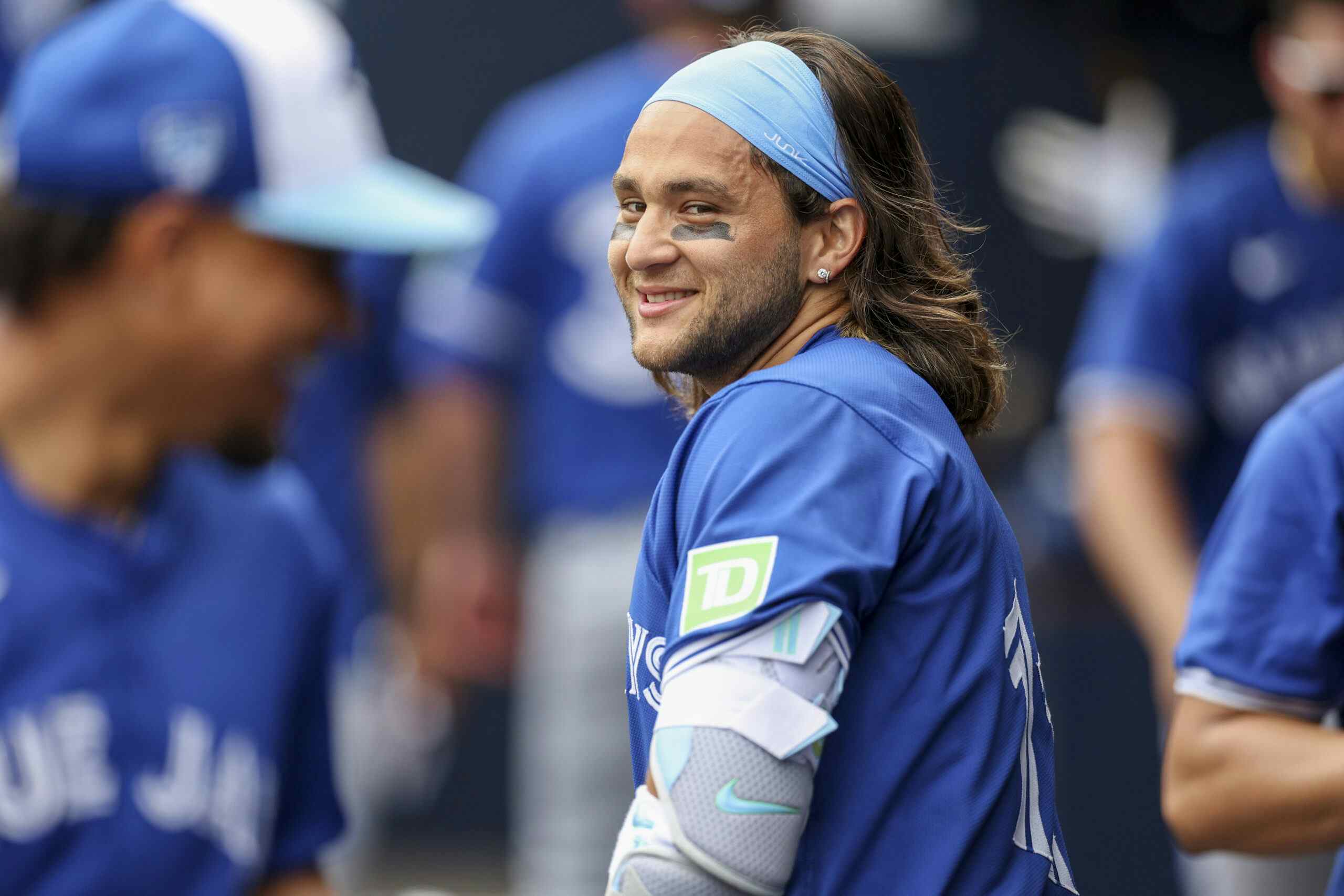Richard Ureña’s tenure with the Blue Jays was a rocky, mistimed spectacle that shouldn’t be repeated

It was August 21, 2016, and the sun was scorching down on the seats at Northeast Delta Dental Stadium in Manchester, New Hampshire. The New Hampshire Fisher Cats, the Double-A affiliate of the Toronto Blue Jays, were hosting the Altoona Curve in a typical midsummer matinee.
As is typical for minor league games, rows and rows of kids crowded around the section directly behind the home team’s first base dugout prior to first pitch. Funnily enough, most of the youngsters — almost all of whom were clutching sweaty Sharpie markers and baseballs that they hoped would soon be autographed — didn’t really know the names of any of the players they were waiting for, except two.
The first was a man whose smile was as endearing as his body language. He waltzed out of the dugout and eagerly ran towards the group, chatting up the fans with undeniable charm. He was a larger gentleman, which made his entrance all the more formidable. This, of course, was Rowdy Tellez, whose boyish charisma was rivalled only at that time by the lofty expectations placed upon him amid a stellar season in the Eastern League.
The other individual attracting the eyes of the young fans was sitting quietly and attentively at the edge of the cushioned dugout bench. He was wearing purple-tinted sunglasses and a big Fisher Cats hat tilted downward, almost as if he didn’t want to be seen.
Though the kids excitedly screamed his name to try and get his attention, all he did was wave respectfully and flash a cheeky smile. It wasn’t that he didn’t want to engage with the fans or bring smiles to kids’ faces, but rather that he was shy, introspective, and preferred to concentrate prior to a game. He nodded in approval and carried himself like the promising prospect he was, going about his business as if he’d already made it, in the most sophisticated way. That was Richard Ureña.
That season, Ureña, 20 at the time, was the organization’s No. 1 prospect on MLB Pipeline’s rankings and seemed poised to reach the major leagues and become an infield staple in no time.
Clearly, that didn’t happen.
After being designated for assignment following the Blue Jays’ announcement of the Travis Shaw signing, Ureña was claimed off waivers by the Baltimore Orioles Friday, officially ending his tenure with the team that signed him as a 16-year-old free agent out of the Dominican Republic.
At this point, it’s important (and somewhat shocking) to remember that Ureña is still just 23 years old. For some reason though, it feels like he’s been lurking in the organization for quite some time, itching to get his chance, which, of course, he never truly got.
Ureña’s meteoric rise to prospect superstardom is the stuff evaluators dream of. Following a tremendous showing in the Dominican Summer and Gulf Coast Leagues in the back half of 2013, he quickly dominated the Appalachian League with the Bluefield Blue Jays before eventually reaching Lansing, Dunedin, and then New Hampshire in 2016.
Before his 20th birthday, he’d earned a Rookie-league MVP title, won a trip to the Class-A Midwest League All-Star Game, and kept up with significantly older pitchers in the Dominican Winter League, all for a measly $725,000.
In 2017, he briefly appeared with the big club, but spent most of his time in Double-A, putting up decent numbers. The following season, he injured his intercostal muscles and spent April rehabbing in Florida, eventually working his way back to the Blue Jays in mid-May. He was sent down two weeks later and wasn’t seen again until August, when he again rode the shuttle and was the main name in countless logistical transactions.
All in all, though, he finished the season with 40 major league games under his belt and slashed an impressive .293/.340/.364. He had a cup of coffee (or, rather, a few cups of coffee) in 2019, but floundered out the season in Buffalo, where he posted a respectable .707 OPS.
He became expendable and never stayed with the Blue Jays for more than a calendar month throughout the three seasons that have passed since he made his major league debut. To the naked eye, he played sound enough defence to warrant more playing time, and often was quite capable at the plate.
It just didn’t work out, for whatever reason, and one of the Blue Jays’ most underrated prospects of the decade left without much of a sound.
Perhaps the most devastating thing about the collapse of Ureña’s stock is how frequently it seems to happen within the confines of the Blue Jays organization. Since his signing, Ureña has joined the likes of Dalton Pompey and Anthony Alford as prospects who, despite being heralded as athletic and talented, never made it off the ground. While the jury’s arguably still out on Alford, it’s hard to deny the fact that he’s heading down the same path as his contemporaries.
Of course, this isn’t the fault of one singular person or decision, nor is it the fault of the organization as a whole. For a while, Ureña was effectively blocked at shortstop by Troy Tulowitzki, Ryan Goins, Aledmys Diaz, Freddy Galvis, and others. For whatever reason, the franchise didn’t value him as a legitimate piece of their future, though the case can certainly be made that he deserved a full season’s worth of at-bats more than Goins, Diaz, and, most recently, Brandon Drury.
In the case of Ureña, nothing seemed to line up at the right times, and that’s a shame. He was never able to truly be appreciated by the front office, and, when he did, he was briefly injured to the point where the consideration to put him on the roster was fleeting.
Really, this story could apply to a bunch of fallen prospects, not just Ureña, who, for all intents and purposes, really isn’t worth getting so worked up about. But, it would be nice to see the Blue Jays give more of a shot to some of their prospects than they traditionally have, instead of trotting out so-called analytics darlings and veterans who fit into the front office’s idea of a “toolsy veteran”.
For instance, the aforementioned Alford has appeared in just 33 career games in parts of three MLB seasons, while Ezequiel Carrera tallied almost 200 games in that same span. Going even further (and more painfully) down the line, the dastardly duo of Sócrates Brito and Alen Hanson tallied two more games played in 2019 than Alford has in his entire career. In many ways, it’s almost impossible to justify the distribution of playing time outlined above, and the same can be said for many of the other prospects lost over the years.
For Ureña, questions can be pointed towards Brandon Drury, who played five games at shortstop and 65 games at third base in 2019 despite putting up a horrid .218/.262/.380 slash line and striking out a remarkably awful 26.6% of the time.
In hindsight, it’s not hard to see how the Blue Jays could’ve given more of a chance to their prospects, whom they worked so hard to develop and grow over the years, instead of giving those games to those who don’t necessarily deserve them.
Had the team played Ureña for a full season and then deemed he wasn’t fit to be a major leaguer, then they can be wholly forgiven for trying out Drury, Hanson, and Breyvic Valera, among others. If they’ve tried something, and it doesn’t end up working, they should move on. But, if they haven’t even fairly trialled the player in question, why store them in the minors until it’s too late?
Perhaps it’s a knee-jerk reaction, but it sure seems as though the organization is at least partially to blame for not taking advantage of Richard Ureña during his “peak” as a young ballplayer. Maybe it’s a faulty sentiment, or maybe the organization truly did do the right thing in choosing to have Goins start instead of him.
Regardless, the organization, and the current front office, should keep an eye on their quieter prospects, because if they catch them at the right time, they could prevent some of them from falling off and fading into obscurity. For now, the louder and more bombastic prospects — the Bichettes and Vlads of the world — are more than enough to keep the fanbase, and the ownership, happy.
Recent articles from Hayden Godfrey





